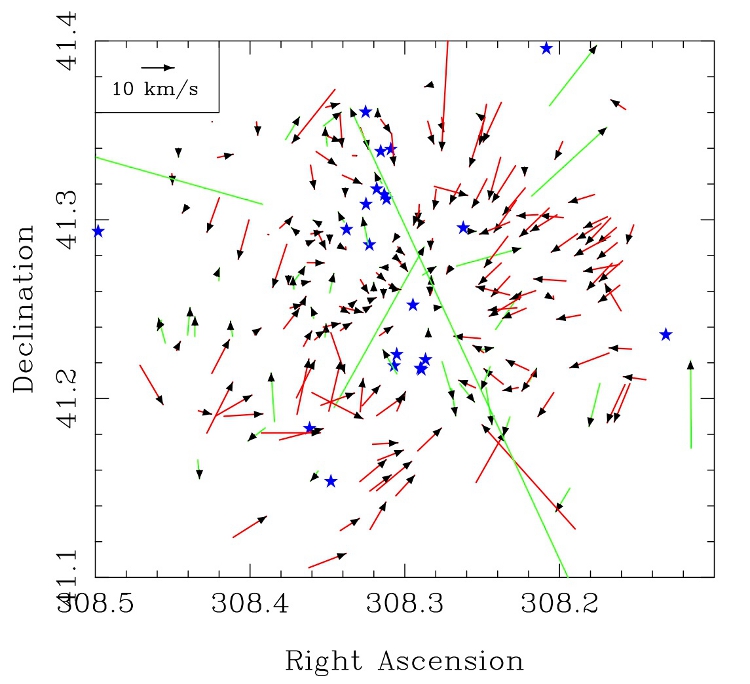| EPoS Contribution |
|
Tracing the Origins of Star Clusters through their Structure and Dynamics
Nick Wright UH, Hertfordshire, UK | |
| The physical and kinematic structure of star clusters and OB associations can provide important clues to how they formed and evolved, providing strong constraints on the star formation process. I will present results from structural studies of star clusters that constrain their past dynamical evolution. For example in Cygnus OB2 we showed that the lack of mass segregation and considerable physical substructure shows that the association can not be an expanded star cluster. This suggests that the massive stars in Cygnus OB2 did not form in a dense star cluster by mechanisms such as competitive accretion or stellar mergers that require high densities. I will also present results from a 3D kinematical survey of Cygnus OB2 that exposes its current dynamical state and history and allows us to test models for the disruption of star clusters. | |
 | |
| Caption: Proper motion velocity vectors for members of Cygnus OB2 with lengths increased for clarity. The vectors are colour-coded by their motion inward (red) or outward (green), and are shown relative to the positions of known O stars (blue) in the association. Note the high level of kinematic substructure (coherently moving groups of stars) within the OB association. | |
| Collaborators: H. Buoy, CAB, Spain J.E. Drew, UH, UK J.J. Drake, CfA, USA M.G. Guarcello, CfA, USA |
Key publication
Suggested Sessions: Molecular Clouds |

